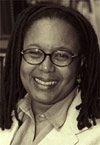What is the origin of the Reports of the Committees on the Status of Women Faculty?
The response to the 1999 MIT report on the status of women faculty in the School of Science demonstrated that putting facts, figures and personal statements on the table for all to see enhances understanding, defines issues and stimulates solutions. Provost Robert A. Brown asked the deans of the other four schools to analyze the status of women faculty in their departments. This collection of reports is the result.
How many women are members of the MIT faculty?
In 2002, there are 154 women on the faculty of MIT. This is 16 percent of the total of 956, an increase of 44 women professors since 1994, when the study began in the School of Science.
What is the current status of women faculty at MIT?
While there has been progress since the 1999 report, the committees found that women are still a small fraction of the faculty. There are continuing instances of marginalization, such as the residual effects of past inequities, particularly around salary and access to resources, and the balancing of family and work responsibilities.
What progress has been made at MIT in dealing with these problems?
The identification of problems has resulted in corrective action being taken on many individual concerns. In addition, systemic progress has been made as well, and includes increases in salaries, more women on the faculty, a more collegial environment, more women serving in leadership positions, the development of guidelines for hiring practices and new family/work policies.
Do President Vest and other senior administrators support the recommendations in the report?
President Vest, Provost Brown, and the deans of the five schools all support the findings and recommendations.
Has a target been set for the number of women on the MIT faculty?
While all deans have committed to increasing the numbers, the dean of engineering has set a specific goal of doubling the number of women on the engineering faculty (to 20 percent) in 10 years. We believe that this goal is feasible given that the school doubled its percentage of women faculty over the last decade and that the pipeline of women obtaining Ph.D.s in engineering is increasing.
What is MIT doing to address issues relating to minority faculty at MIT?
The Council on Faculty Diversity is the focus for our efforts in these areas. We have restructured our processes for faculty searches to set higher standards for aggressive and thorough canvassing of the applicant pool for women and minority candidates.
Under the auspices of the council, Professor Evelynn Hammonds convened a conference this winter of women faculty of color from around the country to examine these issues on a national scale.
A version of this article appeared in MIT Tech Talk on March 20, 2002.






